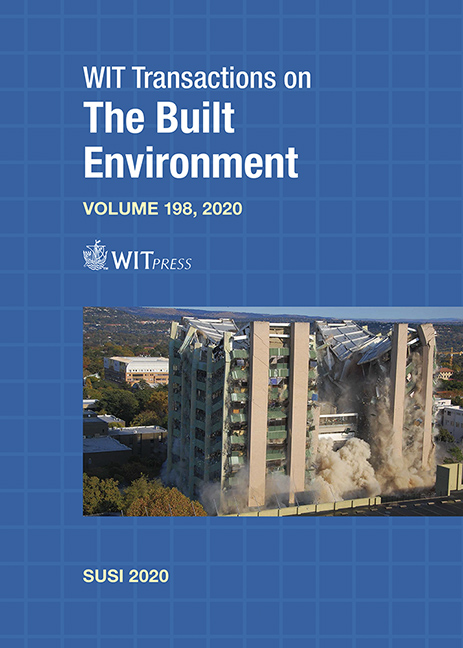PROPOSAL FOR MODIFYING THE EMPIRICAL EQUATIONS OF SOIL DISPLACEMENT FOR GROUND SHOCK FROM BURIED EXPLOSIONS
Price
Free (open access)
Transaction
Volume
198
Pages
11
Page Range
3 - 13
Published
2020
Paper DOI
10.2495/SUSI200011
Copyright
WIT Press
Author(s)
LEO LAINE, OLA-PRAMM LARSEN, JOOSEF LEPPÄNEN
Abstract
This paper studies the empirical equations for predicting soil displacement from ground shock generated by buried or ground penetrating explosive charges. These equations were derived in the 1980s by Drake et al. (1983/1989) and then used in the conventional weapon loads software, TM 5-855-1, developed by US Army Research Engineers. AUTODYN simulations with a one-dimensional finite element wedge were conducted using a multi-material Euler formulation. Different sizes of explosive charges were simulated and the maximum soil displacement in dry sand was studied at different scaled distances Z. When comparing the results from AUTODYN simulations and empirical calculations on maximum soil displacement for charges varying from 0.125 kg to 512 kg in TNT weight and scaled distance Z for each charge from 0.1 to 17 m/kg1/3, AUTODYN simulations indicate that the empirical equations are conservative. Here, the soil model for dry sand from Sjöbo was used in the AUTODYN simulations and compared with dry sand parameters in empirical calculations. The Sjöbo sand’s mechanical properties, including the equation of state (EOS), have been characterized from tri-axial tests performed by Norwegian Geotechnical Institute (NGI) in 2000. When comparing the results in a log-log plot, with axes representing scaled distance and maximum soil displacement, it is seen that the results differ consistently. A proposal is made for scaled distances larger than 1 m/kg1/3 of how the empirical equation for maximum displacement proposed by Drake et al. in 1989 can be modified with a modified scaling factor to receive a better fit with AUTODYN. For smaller scaled distance of less than 0.2 m/kg1/3, the AUTODYN simulations show a saturation shape in the log-log plot. To receive an improved fit with the otherwise straight lines (one line for each charge size), which the original empirical equation was designed with, it is proposed to introduce an exponential factor that saturates the maximum displacements towards a smaller Z.
Keywords
ground shock, buried charge, dry sand, particle velocity, soil displacement, empirical equations, FE-simulations, AUTODYN, Conwep





